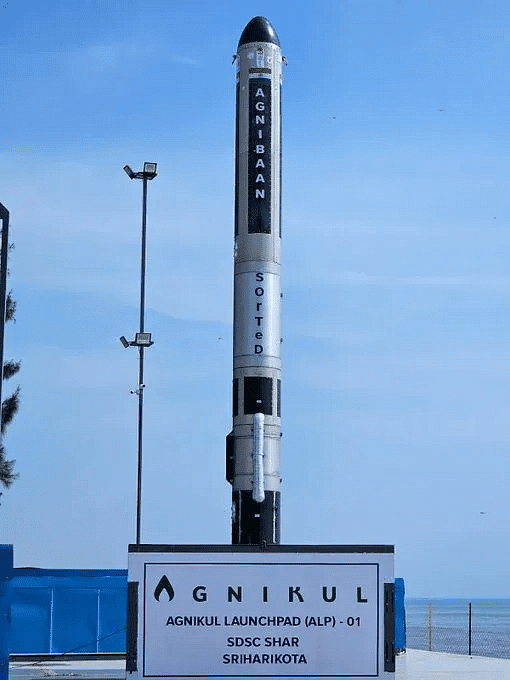UPSC Exam > UPSC Notes > Current Affairs & Hindu Analysis: Daily, Weekly & Monthly > The Hindu Editorial Analysis-1st June 2024
The Hindu Editorial Analysis-1st June 2024 | Current Affairs & Hindu Analysis: Daily, Weekly & Monthly - UPSC PDF Download

Splash back
Why in News?
For the second time, the launch of AgniKul ‘Agnibaan SOrTeD’ has been postponed.
About Agnibaan SOrTeD

Agnibaan SubOrbital Technological Demonstrator (SOrTeD) is a single-stage launch vehicle powered by AgniKul’s patented Agnilet engine.
- It is an entirely 3D-printed, single-piece, 6 kilonewton (kN) semi-cryogenic engine.
- It is the world’s first single piece 3D printedsemi-cryogenic rocket engine.
- It will be launched from India's first private launchpad, ALP-01,located inside the Indian space agency ISRO’s Sriharikota spaceport.
India's First Semicryogenic Engine Vehicle - Agnilet:
- The Agnilet is the first vehicle in India equipped with a semicryogenic engine. This engine type is notable for its use of propellants that are cooled to cryogenic temperatures, which allows for greater efficiency and performance.
Subcooled Liquid-Oxygen-Based Propulsion System:
- The propulsion system of the Agnilet uses subcooled liquid oxygen (LOX). Subcooling involves cooling the LOX below its boiling point to increase its density, allowing more oxidizer to be stored in the same volume, thus enhancing the engine’s efficiency.
Indigenous Development:
- The Agnilet’s propulsion system and various components have been developed indigenously, meaning they have been designed and manufactured within India, showcasing the country’s growing expertise in advanced rocket technology.
Kerosene and Liquid Oxygen Propellants:
- The rocket engine burns kerosene in the presence of liquid oxygen. This combination is commonly used in rocket propulsion due to its high efficiency and energy output.
Direct Integration into Rockets:
- The Agnilet engine can be directly used in rockets without the need for significant modifications or additional components, simplifying its deployment and integration.
Physical Specifications:
- Height: The rocket stands 18 meters tall.
- Diameter: It has a diameter of 1.3 meters.
- These dimensions make it relatively compact yet powerful.
Payload and Lift Capabilities:
- Payload Capacity: The rocket can carry a payload of up to 100 kg to a height of 700 km. This makes it suitable for launching small satellites or scientific instruments into orbit.
- Lift Mass: The rocket can lift a total mass of 14,000 kg, indicating its substantial lifting power.
Orbit Access:
- The Agnilet can access both low-inclination and high-inclination orbits, making it versatile for a variety of missions, from equatorial to polar orbits.
Full Mobility:
- The rocket is designed to be fully mobile, meaning it can be transported and launched from different locations as needed.
Ethernet-Based Avionics Architecture:
- It features the first ever Ethernet-based avionics architecture in India. Ethernet-based systems allow for fast and reliable communication between different parts of the rocket, enhancing performance and reliability.
In-House Developed Autopilot Software:
- The autopilot software, crucial for navigation and control during the flight, has been fully developed in-house. This ensures that all critical technology and intellectual property remain within India.
Multiple Launch Ports:
- The rocket is designed to be launched from more than 10 different ports. This flexibility ensures that it can be deployed from various locations based on mission requirements.
Launch Pedestal 'Dhanush':
- To support its compatibility with multiple launch ports, AgniKul has developed a special launch pedestal named 'Dhanush'. This pedestal supports the rocket’s mobility and ensures it can be launched in various configurations, enhancing its adaptability and operational flexibility.
Foundation and Location:
- Founded: 2017
- Headquarters: Chennai, India
- Incubation: IIT Madras
Significant Milestone with ISRO:
- Agreement with ISRO: In December 2020, AgniKul Cosmos became the first private company in India to sign an agreement with the Indian Space Research Organisation (ISRO) under the IN-SPACe initiative.
- Purpose: This agreement grants AgniKul access to ISRO's expertise and facilities to aid in the development of their rocket, Agnibaan.
Private Launchpad and Mission Control Centre:
- Inauguration: In 2022, AgniKul Cosmos inaugurated India's first private launchpad and mission control centre.
- Location: The facility is situated at the Satish Dhawan Space Centre.
These achievements underscore AgniKul Cosmos's role in advancing India's private space sector and fostering collaboration with ISRO to leverage state-of-the-art facilities and expertise.
The document The Hindu Editorial Analysis-1st June 2024 | Current Affairs & Hindu Analysis: Daily, Weekly & Monthly - UPSC is a part of the UPSC Course Current Affairs & Hindu Analysis: Daily, Weekly & Monthly.
All you need of UPSC at this link: UPSC
|
38 videos|5293 docs|1118 tests
|
FAQs on The Hindu Editorial Analysis-1st June 2024 - Current Affairs & Hindu Analysis: Daily, Weekly & Monthly - UPSC
| 1. What is the significance of the term "splash back" in the context of the Hindu Editorial Analysis? |  |
Ans. The term "splash back" in the context of the Hindu Editorial Analysis refers to the potential backlash or negative consequences that may arise from certain actions or decisions, particularly in the political or social sphere.
| 2. How does the article discuss the concept of "splash back" in relation to current events? |  |
Ans. The article explores how certain policy decisions or actions taken by authorities can lead to unintended consequences or backlash from the public or other stakeholders, creating a "splash back" effect.
| 3. What examples are provided in the article to illustrate the concept of "splash back"? |  |
Ans. The article may provide examples of past incidents where government policies or actions led to significant backlash from the public or resulted in unforeseen negative consequences, highlighting the concept of "splash back."
| 4. How can individuals or organizations mitigate the risk of facing "splash back" in their decision-making processes? |  |
Ans. The article may offer suggestions or strategies for individuals or organizations to consider in order to minimize the potential for facing backlash or negative consequences from their decisions, thereby reducing the risk of experiencing "splash back."
| 5. What are some of the key takeaways from the Hindu Editorial Analysis regarding the concept of "splash back"? |  |
Ans. The article may highlight key insights or lessons learned from analyzing the concept of "splash back," providing readers with valuable information on how to navigate potential risks and consequences in their own decision-making processes.
Related Searches
















